This semester I’m focusing my attention on making Chinese materials.
Why Sagebooks
 Even before we started homeschooling I knew I wanted to use Sagebooks to learn Chinese. Sagebooks is the cornerstone of my curriculum. What it’s providing is the character list that other materials can build on. It’s developed by a Montessori teacher. The premise is that from the first character you learn, you start reading. Unlike a phonics system, Chinese characters are pictograms. Often students learn a separate phonetic system (pinyin or zhuyin) to help them read in elementary until they learn enough characters. I believe you need 500+ to really read comfortably. With this series, you start practicing reading sentences with illustrations on top (for hints). This is important because a child can get very frustrated trying to read in Chinese. There are just too many words they don’t know in the beginning. AND they can’t sound it out! I’ve heard many stories that ones a child learns to read in English, they don’t want to read in Chinese anymore, because the level of books they can read in Chinese is not the same as their developmental level. Who wants to read board books when they really want to read stories?
Even before we started homeschooling I knew I wanted to use Sagebooks to learn Chinese. Sagebooks is the cornerstone of my curriculum. What it’s providing is the character list that other materials can build on. It’s developed by a Montessori teacher. The premise is that from the first character you learn, you start reading. Unlike a phonics system, Chinese characters are pictograms. Often students learn a separate phonetic system (pinyin or zhuyin) to help them read in elementary until they learn enough characters. I believe you need 500+ to really read comfortably. With this series, you start practicing reading sentences with illustrations on top (for hints). This is important because a child can get very frustrated trying to read in Chinese. There are just too many words they don’t know in the beginning. AND they can’t sound it out! I’ve heard many stories that ones a child learns to read in English, they don’t want to read in Chinese anymore, because the level of books they can read in Chinese is not the same as their developmental level. Who wants to read board books when they really want to read stories?

Sagebooks is also unique in that they don’t teach the most easy to write characters first. They introduce high frequency characters in a sequence that enables you to read the text. For example, the numbers 1-10 are often introduced first, along with sun, moon, day, etc. In Sagebooks, they introduce the Chinese characters for 4, 5, and 10, in the first series and nothing else. I guess they expect that you’ll pick up the rest elsewhere! Instead, they introduce high frequency words that can be made into a sentence. The first word is mountain (山), the second high (高). By the second word you’re reading a word phrase.

The readers are divided into 5 series, blue, green, orange, pink, red. Each series has 5 books, each book teaches 20 characters, for a total of 500 characters. There are also accompanying “Treasure Boxes“, also 5 books for each series. You can use those to practice actually reading books, only using the characters that has been introduced to you in the series. I call them series rather than levels because the characters don’t get progressively harder. Though I do see that the first book has more words with fewer strokes than future books. Sagebooks also have a final comics that uses the 500 characters (well I’m sure not all 500) you just learned as well as 5 idioms books. They also have ebooks, apps, and a 12 zodiacs books (which I don’t recommend). Everything has both simplified and traditional versions except the ebooks and apps, which are only simplified.

There are competing offerings out there. I know of two, Greenfield and Better Chinese. I’ve seen Better Chinese though never used it. From what I saw it’s a great program, especially for non-native speakers because it builds in teaching grammar in its sentence repetition. It comes with worksheets, and I think comprehension questions? It is really geared toward people learning a language in a classroom setting. But since my kids speak Chinese, I wanted a series where the focus is on reading as soon as possible, and where I can keep track of the number of characters my children has learned.
Before I dive into the materials I made, some “cons” if you are using the Traditional Chinese version. This series is made in Hong Kong so the characters and stroke orders are what is used in Hong Kong. This means that for some characters like 著, and 甚, it’s the official characters used in Hong Kong. These are different from the official versions published by Taiwan Educational Ministry. They’re considered alternative versions of the character so no biggie but these are slight variation. Also and this is not a con per se, 1 (一) and 完 are not introduced at all but used in the first book.
The Children’s Chinese Level
Thumper went to pre-school and learned a bunch of characters already so I honestly don’t know how effective the series is with her. She used Better Chinese in primary and Sage in elementary. Last semester, we spent two months re-reading over the series and I determined that after 2.25 years of preschool, she knew enough to be half way through the third series. That’s 250+ characters. I’m pretty sure she knows way more than that because of the way the characters are introduced. But that is where we are now. Rather than the 1-5 words in each series she doesn’t know. She has about 20+ characters she doesn’t know in Orange Series (series 3). Astroboy never learned so he’s going to be my guinea pig.
How We’re Using the Series
We only started this last week so who knows how long this will stick. We’re primarily using this to learn to read, with writing being secondary. We will most likely add other ways to introduce characters because I also like the way Thumper learned characters in preschool. My aim is to have the children feel good about reading in Chinese.
Here are the tools/steps I’m using:
- flashcards
- dictionary
- writing paper
- reading
- Train Chinese app
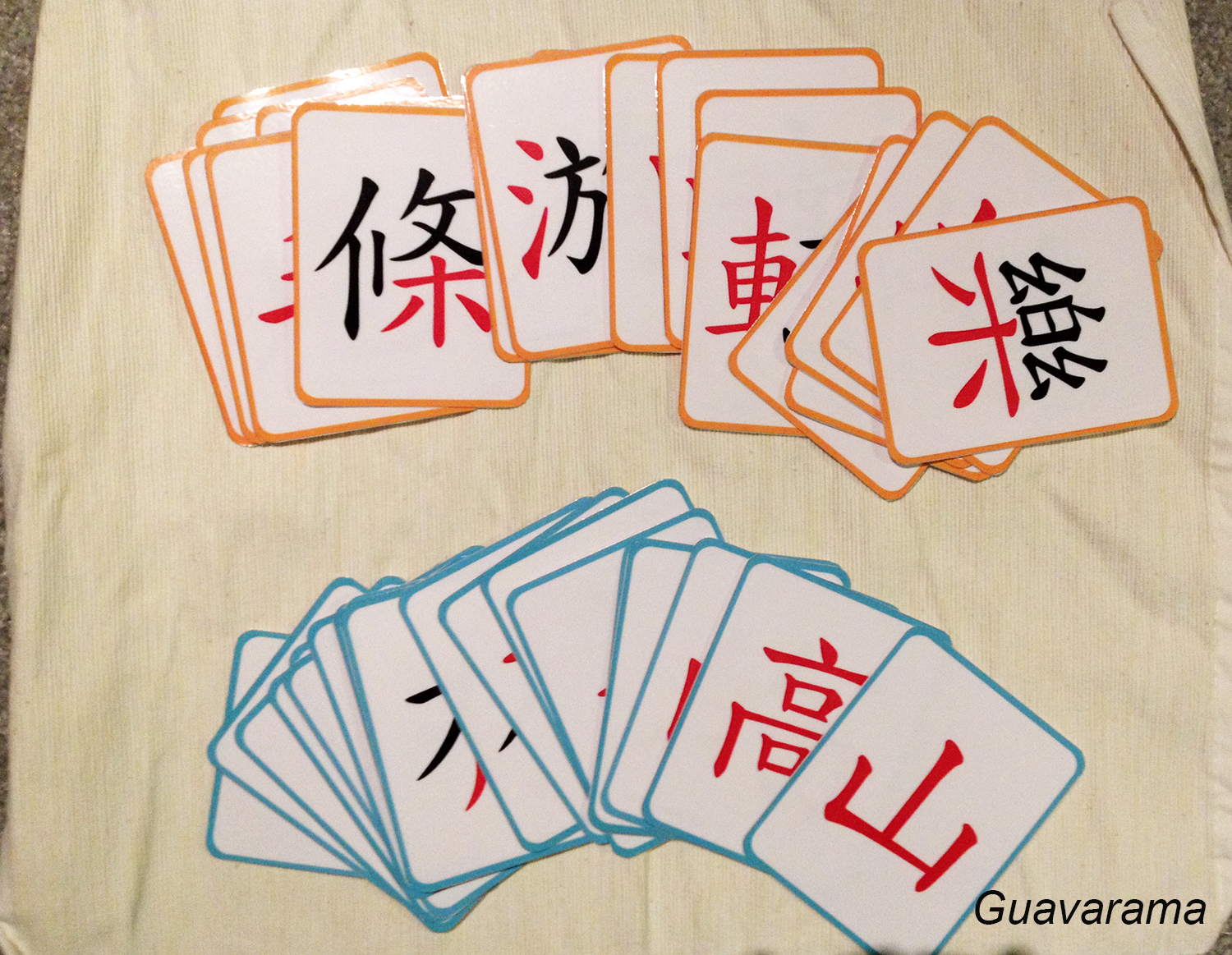
These are the color coded and laminated flashcards I’m using. I so wish Sagebooks followed the Montessori coloring for numbers, it would make it more consistent. But that’s me and my anal-retentiveness about materials. We first do a three period lesson on three characters. This takes about 5 minutes. We talk about words you can use with this character, look at the character components, during this time.
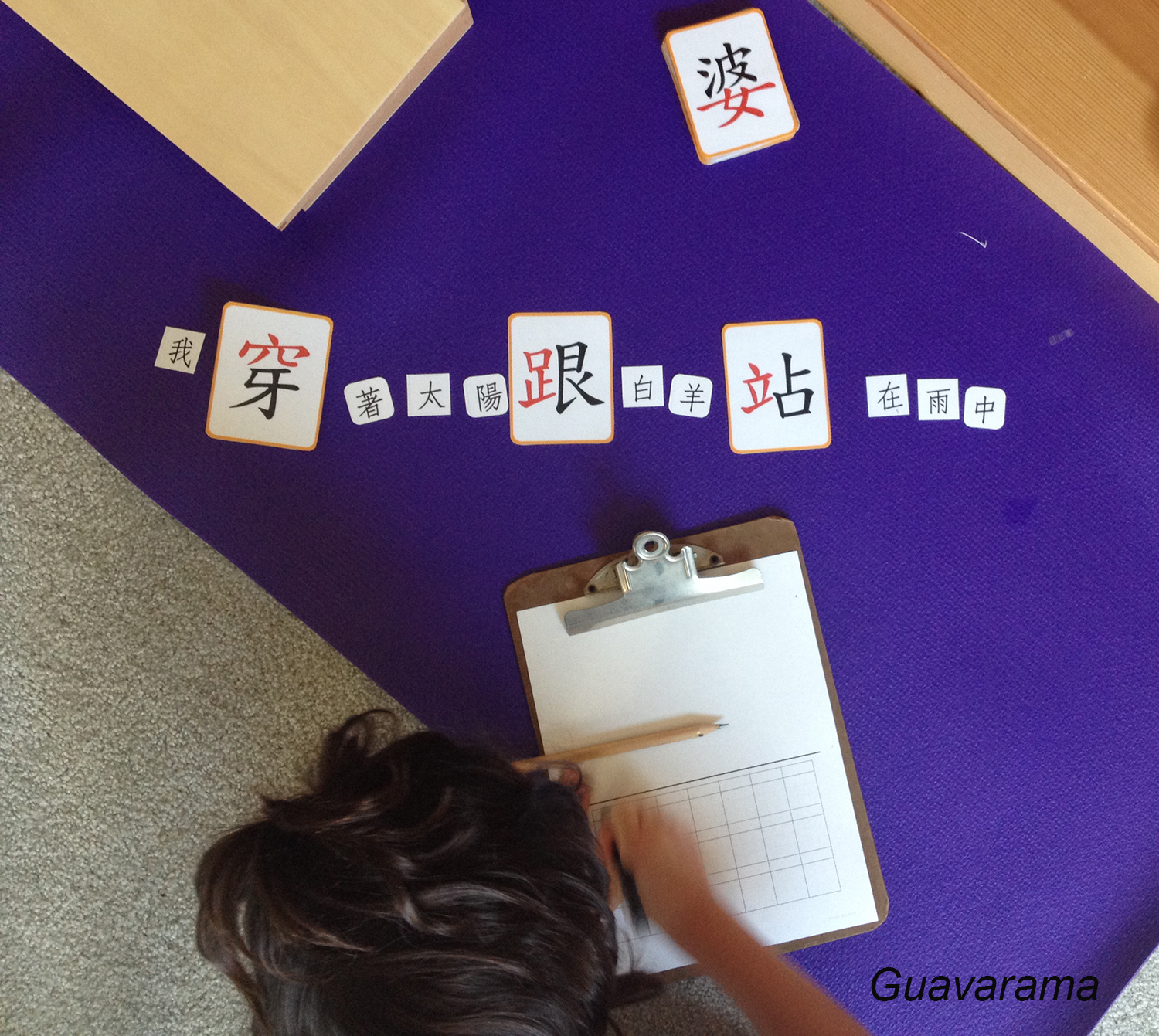

I discussed with Thumper how many characters she wants to learn each week and she said 3 a day. Because she knows some characters in the 3rd series, we’re going to jump around. Each day I chose 3 characters that she doesn’t know and she is to make one sentence with it. The caveat is that she can only use words in the dictionary, which contains the first 200+ characters. This adds a fun factor to the exercise. At this point while she can read characters she doesn’t remember how to write many of them. So there is a dictionary of the characters she has learned, organized by zhuyin. Each character in the dictionary is color-coded in the back so you know where it comes from. The previous characters she just learned gets added to the dictionary. I do help her with the sentence construction because there are many words in the dictionary.
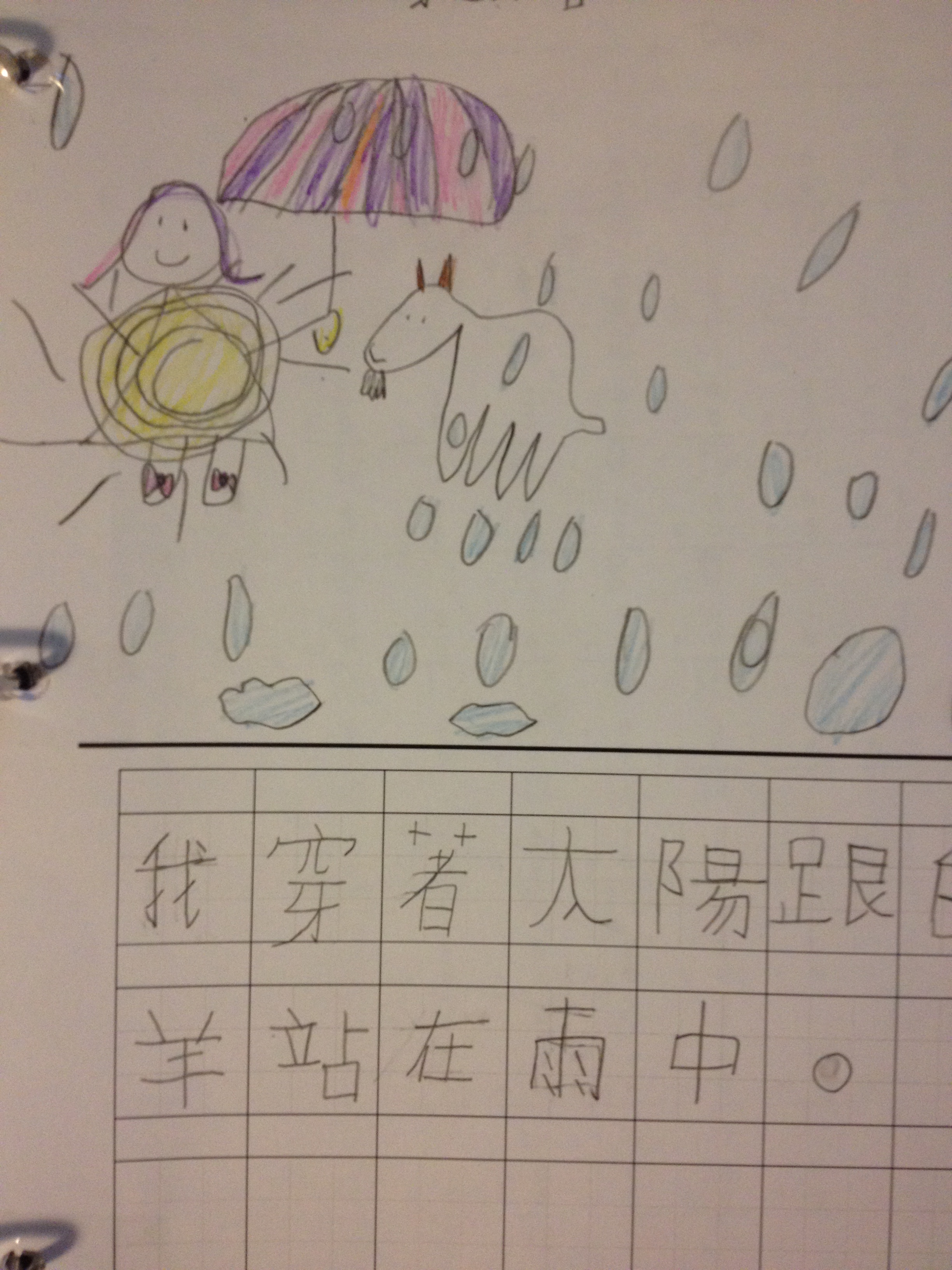
The next day, she writes this out onto a half sheet and illustrates it. She loves this because she sometimes has to make non-sensical sentence. For example, this one says, “I wear the sun and stand in the rain with the white goat.” She giggled and giggled and had much fun illustrating.
It’s really amazing how fast a 7 year old picks up new characters. Unlike Astroboy who really cannot remember words like 的 有 easily because they’re not nouns, even after 3 months, and needs repetition for the characters to stick, Thumper picks them up in 5 minutes and remembers them the next day. I know I need reintroduce these for it to stick after another week or two. But teaching characters is SO MUCH EASIER. It also helps she already knows 200+ probably.
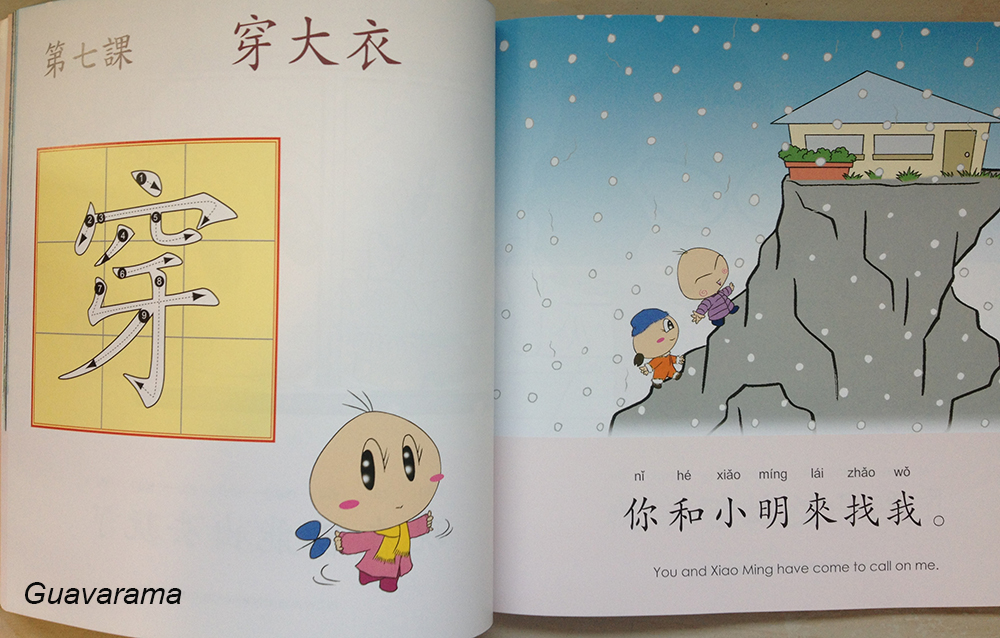
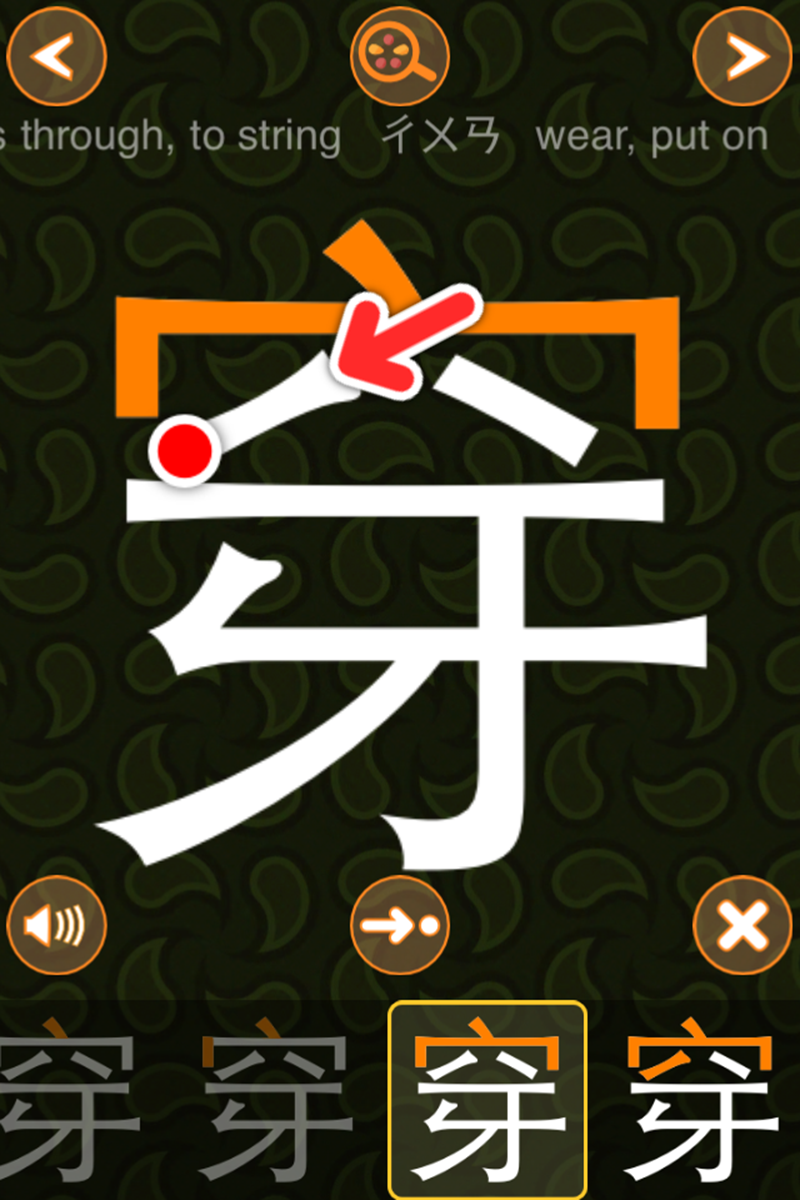
The last thing we do is read the relevant chapters in Sagebooks to practice reading. With Astroboy I used Chinese Write app to practice stroke order . I wanted to do the same with Thumper but haven’t found the time.
Thumper has a low threshold with repetition in work. I don’t know how long this is going to sustain her interest. I shall report back.
Reasons behind the work
I was against flash cards initially because learning one character has no meaning compared with learning characters as parts of a word. I saw this in the way Thumper learned her characters in preschool. I see this when she guesses characters. She typically recalls the wrong character in a word. For example, she would say 蝶 instead of 蝴. It’s akin to saying reading fly instead of butter because she learned the characters for butterfly as a set. I like this because it means she learned how to use the characters while learning to read them. Flashcards are also passive, rather than active. And we typically learn better when we have to actively recall something.
However, I saw a set in Taiwan for introducing 180 characters this way. There is a whole sequence involved, through playing games, that gets the children to remember. I’ll document that in another post as I plan to try it with Astroboy. At this point it seems that Thumper doesn’t quite need it. I think she needs active manipulating of the characters for it to stick a bit but not elaborate games anymore. Montessori philosophy is all about writing before reading. As you recall how to write, you’re in essence sounding out the word in your head, this helps with reading. In fact, the argument is that when you read, it’s a two step process because you first sound out the word. Then you need to assemble and interpret its meaning. Whereas when you write, you already know the word you want to use, you just need to find the phonics for it; so it’s only 1 step. But Chinese is not a phonics system.
All this to say this is why I decided to give character flashcards a try. The flashcards are concrete materials, which help children learn at the lower elementary level. I also love them because they’re laminated so you can write on them with a whiteboard marker. There are empty color-coded cards for this purpose. You do three characters because three is usually the number of items to introduce in a three-period lesson. If we keep this up we’ll be done in 4 months. Though I really doubt it.
The flashcards have the character radicals in red. I’m hoping this will be also an indirect preparation for Thumper for memorizing her radicals.
The usage of the dictionary will allow Thumper to practice words I know she should know, in a self-help way. Otherwise, in the Montessori classroom settings I’ve seen, the kids ask the teacher to show them the characters to write. And the philosophy is all about providing an environment where children can learn themselves without teacher no? The dictionary also serves another purpose. She is indirectly learning/reviewing her zhuyin, in preparation for looking words up in the dictionary. As I find that she is still not 100% familiar with it.
Thumper is writing on a half sheet as it seems that that is how a lot of work is done in the primary and lower elementary level, half illustration half writing. I guess it helps them to learn better? In any case, it gets the “art” in. One sentence a day is a bit low on my scale. But I know she won’t go for more than that day after day. I also think having to compose sentence this way makes her really think about grammar. This is partly why I’m choosing the 3 characters though I’m trying to think of a way for her to do the whole thing herself other than the three period lesson.
From a Montessori philosophy it works better when you have to write stories or sentences that you find meaningful. I remember needing to make up sentences for characters in grade school. Always so painful. So I will mostly extend this into another activity when she is done with one series, where we need to write a small story “book”, illustrated, using some of the characters we learned.
After reading the “How We Learn” book, I’m trying out the “use varied material, varied presentation, varied time” method more. This is why we introduce characters one day, but she writes them the next day and learn three new characters. It’s a review.
I plan to follow up with separate work for writing characters, learning components and radicals, etc. I decided that my focus needs to be reading because you can always get by without writing now a days if you know how to type. Once Thumper finishes her zhuyin practice, we will start with writing in earnest. The other reason is I know that if I focus on both reading and writing the characters at the same time, with my pickiness on writing beautifully, she will balk at this work eventually. Too much of Mama nitpicking.
What about Astroboy?
I did the same thing with Astroboy but the experience is quite different. Last semester we read up to about chapter 10, mostly because of his own choosing. But he kind of got stuck after that because he often wants to keep reading but then can’t really remember that many words and then get discouraged. Additionally, he always wants to start re-reading from chapter 1, which makes him tired by the time he gets to a new character.
For Astroboy, last week I picked all the characters he knew well plus a few more characters he sometimes remembers. This took us back to chapter 10. I added 1-2 new words a day. We did the three period lesson with him and then just read the book. This is why I’m going to try that Taiwanese 字180 system with him. He really didn’t want to do the follow up work I thought up, like constructing and pasting sentences and illustrating. Basically a primary version of his sister’s work, since he can’t write yet. But with a sister who draws so much better than him, he often doesn’t want to draw.
The problem with following Montessori in primary is that it’s all whatever the child wants to do. So if he doesn’t want to do the work, I need to think of a better way to present it. Because it means my work wasn’t attractive enough to begin with. I’m trying to reconcile that with my desire to have him learn 200+ like his sister by 6. By my estimation we need 1-2 characters a day to reach that goal.
However, he wanted to participate when his sister was learning her characters. So I had them play games with each other. And he learned a character that way. I originally didn’t want him to learn outside of his current series. Then it occurred to me a character is a character. So he learned 親 (to kiss). I know I need to add more variety in material for him. I’ve seen it done in a Montessori setting. I just need to find some time to make it.
Sometimes I wonder if learning Chinese characters is like learning through the whole-words system. You point to the characters while you read and eventually the kid gets it.
Oh! I did use the Chinese Writer program with Astroboy. Every day during Thumper’s swim practice, I ask him if he wants to play with it. And he’s learning how to do the strokes this way. But this is also slow going because some days he wants to use it other days he doesn’t.
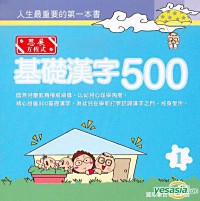


What is your recommendation in terms of minimum age for my kids to begin going through the Basic 500 series? Thanks.
Thank you for sharing your ideas! They are amazing! Can you tell me what program you use to make the flashcards? So beautiful! I am convinced to get the whole set of Saga for my almost 4 year old. However we are learning simplified Chinese so not all characters in your file work. Thank you!
The short answer is 4 or 5. The long answer is, it depends on your child’s Chinese fluency level and your English learning environment. Starting late doesn’t mean they will learn it slower. You’re really just racing against the time when your child will start learning English.
You can check out this blog post https://pbjhome.wordpress.com/2015/12/22/%E8%8A%B1%E7%94%9F%E5%AD%B8%E4%B8%AD%E6%96%87%E7%B3%BB%E5%88%97%E4%B8%80/
Hi, your colour coded flashcards were very useful. I am done with the blue set. Do you mind sharing other colour coded flashcards! Thanks a lot!!
You can buy these from SageBOoks directly.
Thank you for sharing your ideas! They are amazing! Can you tell me what program you use to make the flashcards? So beautiful! I am convinced to get the whole set of Saga for my almost 4 year old. However we are learning simplified Chinese so not all characters in your file work. Thank you!
Illustrator!